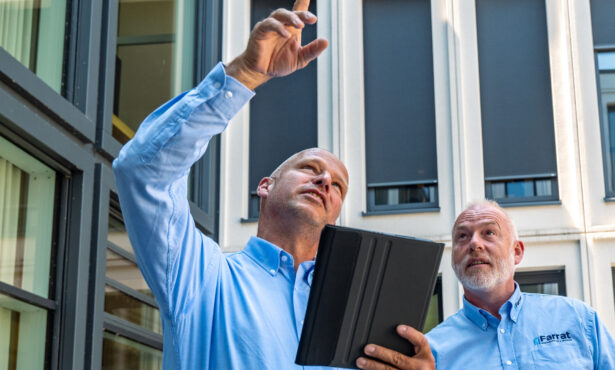Climate change continues to be one of the most pressing issues of our day and all industries are going to need to make significant changes to challenge the irreparable damage to our world that could continue to be caused.
However, there is a strong argument that it is those in more developed countries should be working hardest in order to dramatically reduce the impact they are currently having and look to undo as much of the damage already done.
As a result, a historic deal has been struck at the COP27 summit that will see ‘richer nations’ pay ‘poorer countries’ for the damage and economic losses caused by climate change.
Climate injustice around the world
Nearly three-quarters of all excess emissions come from the US and the EU alone. The US is responsible for 40% of all excess emissions with the EU slightly behind on 29%. Latin America, Africa, the Middle East, and Asia combined are only responsible for 8% of excess emissions, and yet these are often the geographic regions that are feeling the repercussions of climate change the most. (Source: The Structural Engineer August 2022)
The most recent example of this is the deadly floods in Pakistan. Pakistan is reported to have received more than 3 times its usual rainfall in August, making it the wettest August since 1961. These floods have destroyed 1.7 million homes, and nearly 1500 people lost their lives. Whilst the region has been subject to monsoons before, studies have shown that climate change could have increased the most intense rainfall over a short period in the worst-affected areas by about 50%.
This region being so significantly negatively impacted by the effects of climate change despite contributing so comparatively little is the very definition of climate injustice.
A change in approach to building design to reduce climate injustice
When looking at the fastest-growing economies in the world, they are mainly developing nations such as India, Bangladesh, and Rwanda. However, when you look at some of the biggest construction projects in the world, 7 out of 10 of the largest construction projects in the world being started, worked on, or completed in 2022 are in developed countries.
Get in touch: Challenge our engineers to ensure the efficiency and safety of your projects. Email us or call +44 161 924 1600 to talk to the team.
The European construction sector is expected to grow by 2.5% in the same period.
As the built environment continues to grow in the developed world, the construction industry needs to create effective collaborations between architects, contractors, developers, and project stakeholders in order that buildings are designed with environmental factors in mind.
Insulation
Through the cost-of-living crisis partially caused by the issues in Russia and Ukraine, there are many easy-to-access statistics on how much insulation can save you in terms of money spent on energy bills – the Environmental Protection Agency in the US state that the average homeowner can save 11% of total energy costs by adding insulation.
The cost of bills might be a driving factor for individuals but the reduction in the use of energy means fewer carbon emissions which can only have a positive impact on the environment and decrease the need for reparations in the future.
The phrase ‘insulation’ make bring to mind domestic solutions such as cavity wall and loft insulation but in fact, when done efficiently, insulating buildings starts at the building design stage with the choice of building materials and steps taken throughout to reduce the transference of heat/cold between inside and outside.
In addition to the building materials selected for walls and the types of windows and doors specified, it has long been recognised that thermal bridges within building envelopes can cause problems of heat loss, leading to poor energy performance.
The use of structural thermal breaks between steel and concrete protruding through building envelopes will ensure efficiency in this area. This also includes finer structural details such as façade system supports, balcony attachments, data centre substructures, and rooftop plant installations.
Sustainable building materials
According to the November 2020 National Infrastructure Strategy in the UK, there are six overarching recommendations where the action taken now will result in rapid decarbonisation of the construction sector. One is that current design and performance standards should be updated to enable more holistic design approaches that support the efficient design and reuse of materials.
This was echoed in a report by the Royal Academy of Engineering on ‘Decarbonising Construction’, which stated that using sustainable materials as standard and low-carbon procurement were two key vital aspects in achieving net-zero transformation in the construction sector.
Current end-of-life scenarios for three of the most common construction materials; concrete, timber, and steel are shown below.
Whilst steel production is currently a source of greenhouse gas emissions, a revolution in steel production is within reach by reusing or recycling it as standard. Reusing it lends itself to modular design where old materials can be made into aspects of a new building, which would also use less energy than recycling it.
The downcycling of concrete – crushing and using it in different applications – is a common practice in the construction sector. Currently, aggregate made from downcycled concrete accounts for 6% to 8% of aggregate use in Europe. Maintaining and expanding this practice could prevent concrete from going into landfill, but doesn’t influence the emissions from cement production since it meets the demand for a different application.
Overall reusable materials such as steel are ideally placed for reducing emissions, and use of steel is on the rise. In 2021 the use of structural steelwork in industrial buildings increased by 16.4% and by 10% for offices with further growth predicted, showing an appetite for steel as a sustainable and reusable material.
Combining insulation with sustainable building specification
Where sustainable and environmentally friendly building design collaborations will be most likely to succeed is with a smarter design made up of energy efficiency, reusable material specification, and an approach to insulation that goes beyond what is the bare minimum.
This is key for buildings designed for developed countries, but ‘the West’ can also lend their skills and technology – and provide education – to construction in developing countries in order that they can get commercial structures and residential developments right first time.
This will ensure they avoid a future situation that countries like the UK find themselves in currently, where they are looking at millions of buildings dating back to before the industrial revolution that need retrofitting with insulation to meet the ideal standards that could be achieved with the initiative and funding.
Summary
Engineers, architects, and specifiers are facing a huge challenge in taking a holistic approach to sustainability to help tackle climate change and tackle climate inequality that is plaguing the world.
This isn’t something to worry about in the future. With developing countries already feeling the force of environmental change and lives already being lost, climate inequality caused by construction needs our full attention now before the effects are made worse and spread further still across the world.
About the author
Chris Lister BA(Hons) DipArch – Commercial Manager Structural Thermal Breaks
Chris Lister is the Commercial Manager for Farrat Structural Thermal Breaks and the Northern Region Chair of the British Construction Steel Association BCSA.
Having studied both Engineering and Architecture he has worked exclusively in the construction and building product design sector. Chris heads the development of Farrat Structural Thermal Break products and Facade Design Solutions.
He is a passionate contributor to the global discussion on fire safety in high-rise structures and building physics research. An advocate for achieving the highest level of energy efficiency Chris is the Farrat Lead on our new product development Project “Falcon” aiming to design out bouncy balconies
Thermal break materials with Farrat
Farrat’s Structural Thermal Breaks are an essential component for energy-efficient buildings. If you would like to learn more about the integration of thermal breaks in structural connections, contact our Structural Thermal Break team by email, call us at 0161 924 1600 or fill in the contact us form.








